Upon gaining independence in 2008, Kosovo adopted a new flag that symbolizes its journey toward sovereignty and reflects its unique identity in the Balkans.
The Kosovo Flag was chosen via a UN-organized competition, attempted to move away from traditional ethnic symbols and signified a modern, inclusive vision for Kosovo’s future. Despite ongoing political challenges, especially concerning its recognition on the global stage, the flag is a source of national pride and unity.
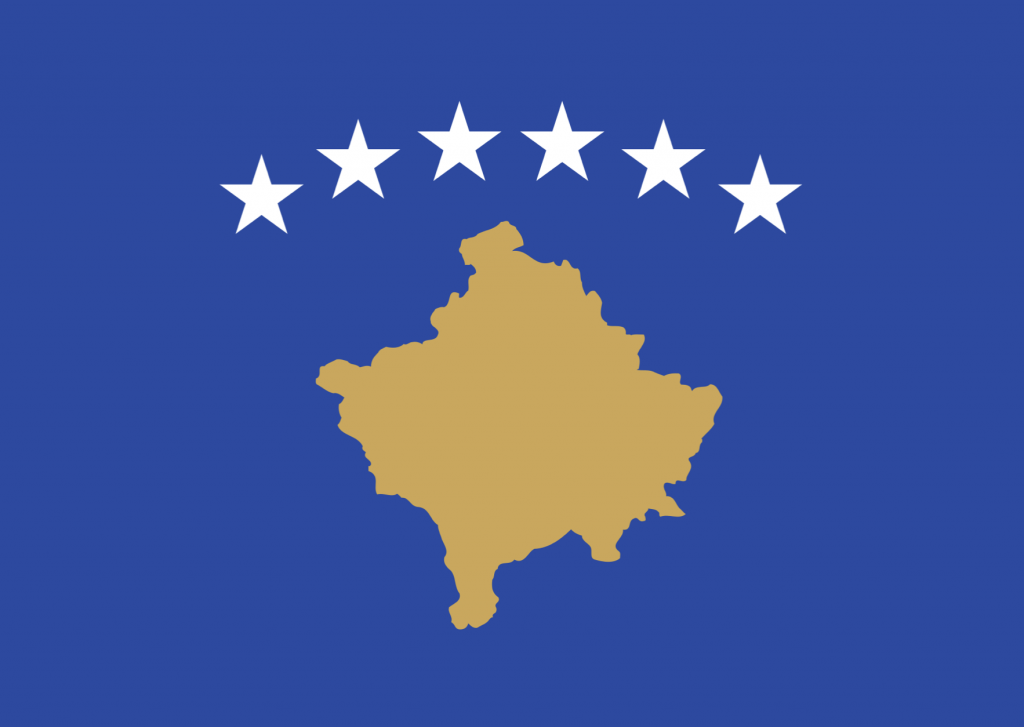
Here’s the rundown on the history of flags in Kosovo, the symbolism of the current design, and what it says about Kosovo today:
Table of Contents
Flags used in Kosovo before independence
Until 1991, Kosovo did not have a flag of its own despite being designated as an autonomous province within Yugoslavia. With most Kosovans being ethnic Albanians, many used the Albanian double-headed eagle flag.
While the government in Belgrade permitted the Albanian community in Kosovo to use a distinct flag, it mandated the inclusion of Yugoslavia’s ‘red star’ as a symbol of unity. This flag design was formally recognized as the Albanian community’s official flag from 1969, although it stirred tensions with Kosovan Serbs. As Yugoslavia’s began to collapse, ethnic Serbs in Kosovo began displaying the pan-Slavic blue-white-red tricolour – the former Yugoslav flag minus the Socialist red star.
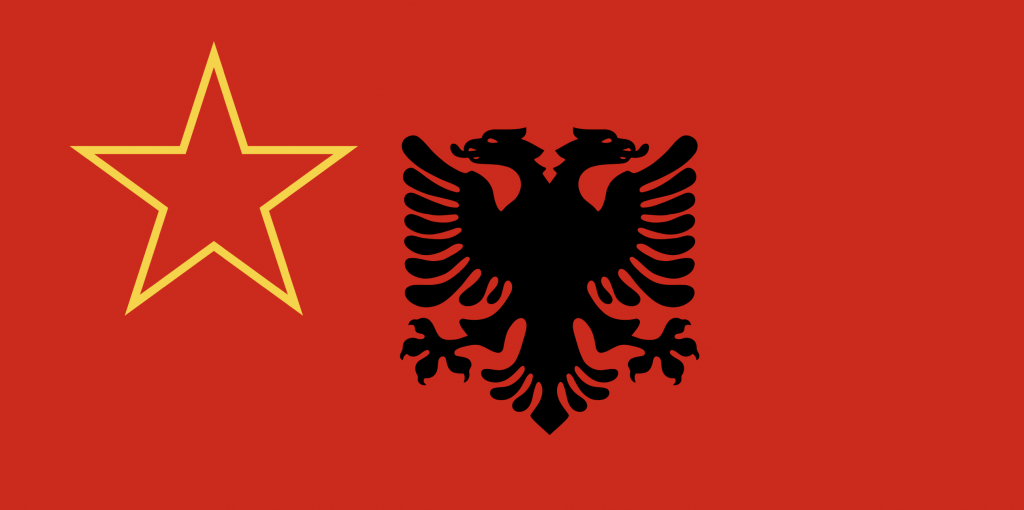
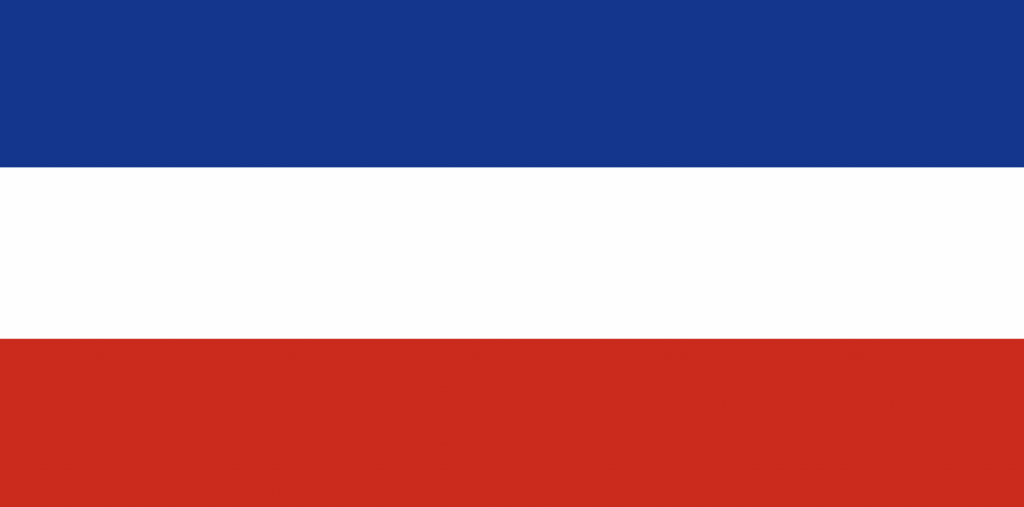
Come 1991, Yugoslavia had all but disintegrated. What remained of the country still claimed the territory of Kosovo, but its control over the territory was very limited. A pronto-state, the first “Republic of Kosova,” was established, which ran parallel institutions for ethnic Albanians.
During this time, the flag of neighbouring Albania was used as the national flag, except with the double-headed eagle positioned to the left, rather than in the centre.
After years of growing tensions, the Kosovan War broke out in February 1998, which only came to an end in June 1999 as the NATO-backed Kosovo Force (KFOR) entered the country as peacekeepers. From this time until 2008, the country was governed alongside an international peacekeeping mission, the United Nations Interim Administration Mission (UNMIK). For these nine years, the standard UN flag acted as the national flag.
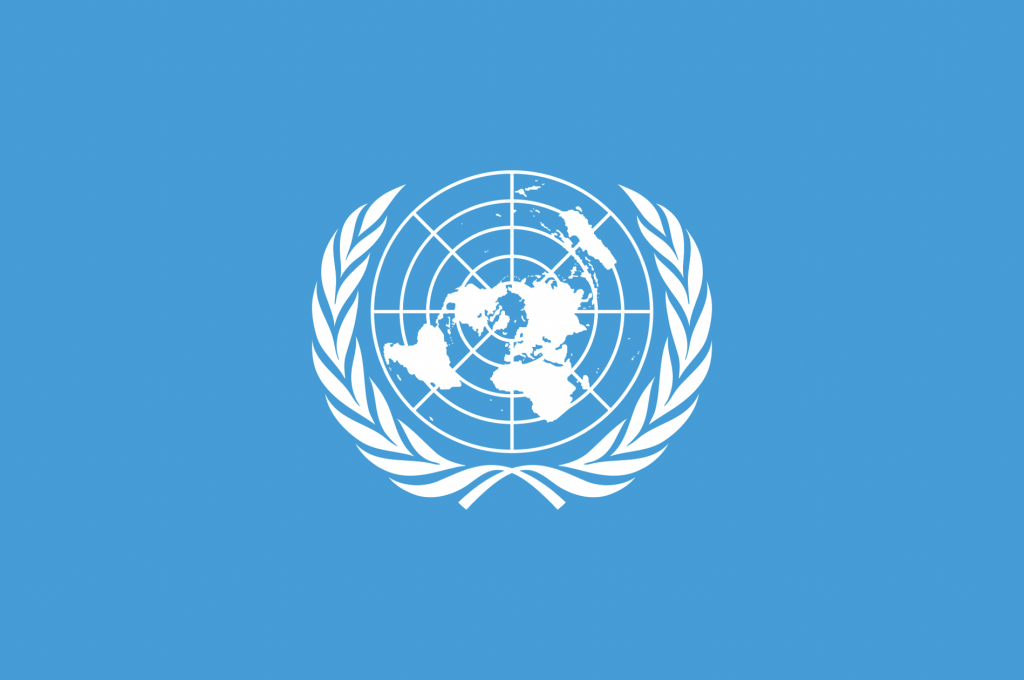
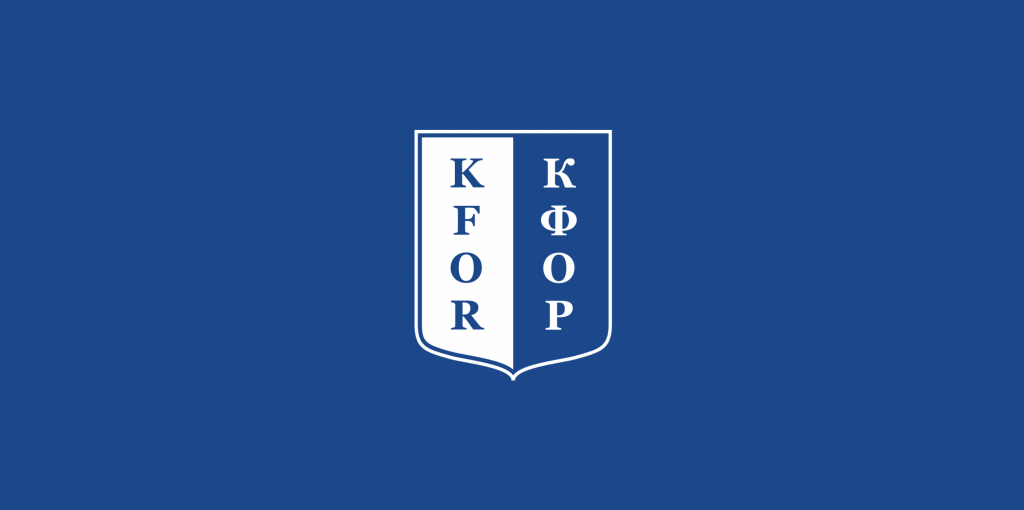
Kosovo then unilaterally declared independence on February 17th, 2008, bringing the period of UN administration to an end. Simultaneously, the new nation adopted its own flag.
The adoption of a national flag of Kosovo
Kosovo’s flag design emerged as a result of the Ahtisaari Plan, an ambitious, UN-led initiative to create a multi-ethnic, democratic Kosovo. As part of this, a competition was launched to design a new flag to represent Kosovo – over one thousand entries were received.
The winning design was intended not to favour any one of the country’s ethnic groups, and to promote a sense of collective Kosovan identity.
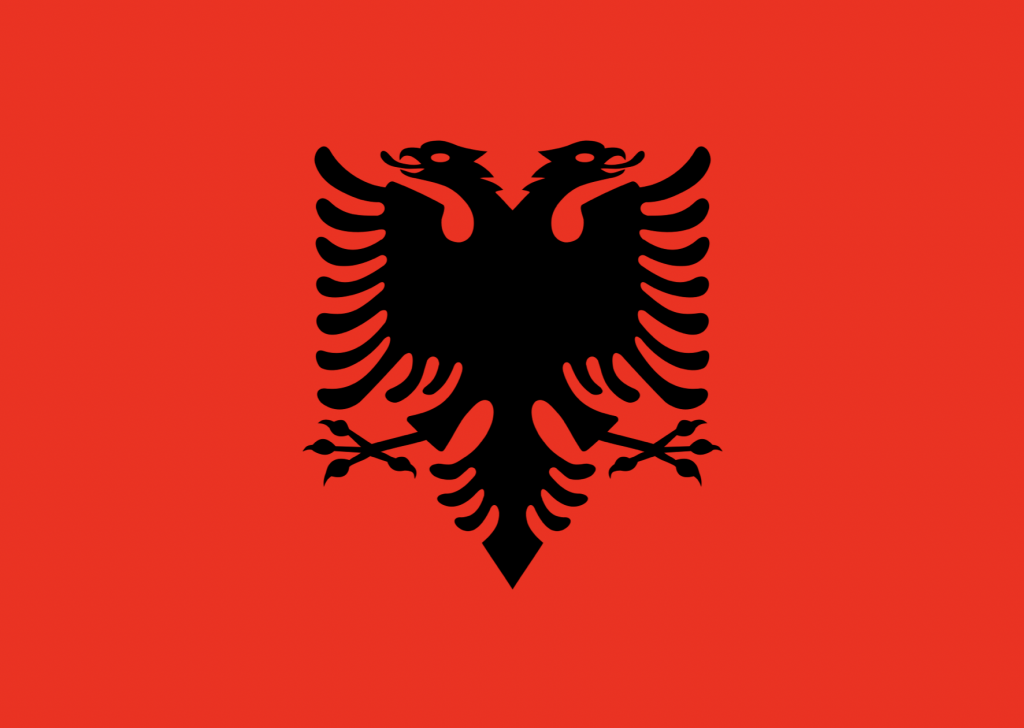
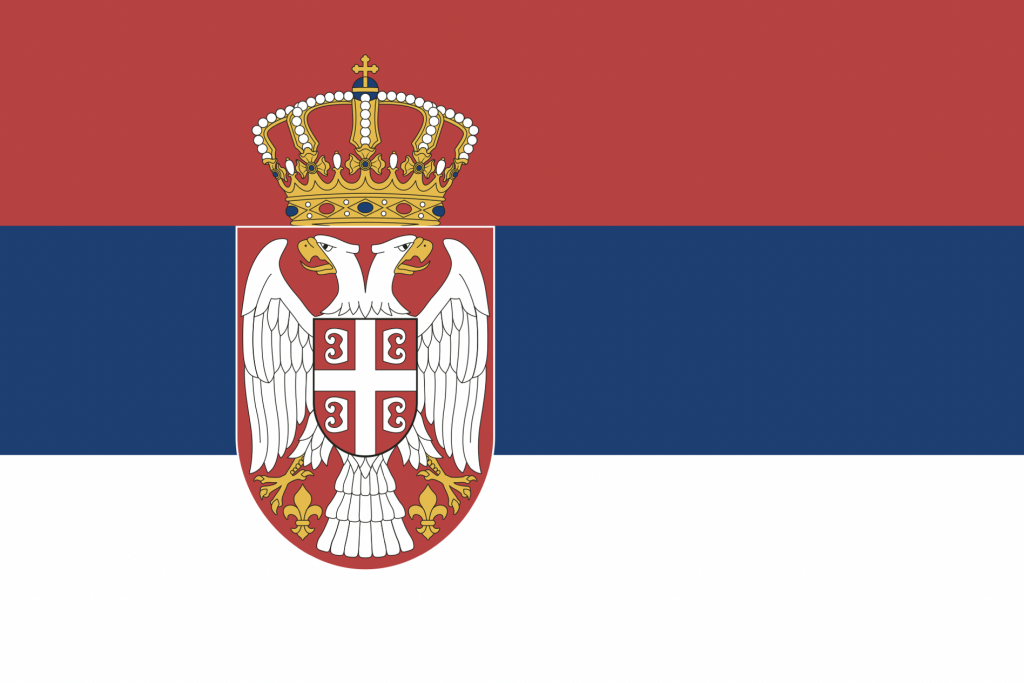
Kosovo and Cyprus are, uniquely, the only countries to feature a map on their national flags. This is with the intent to show the oneness of the land despite past divisions among the people living on it.
The colour scheme of Kosovo’s flag, particularly the white stars on a blue field, also closely resembles Bosnia’s national banner. Both flags draw inspiration from the EU flag, incorporating these symbols to reflect their European aspirations.
Finally, the six stars are for the six largest ethnic groups in the country: Albanians, Serbs, Bosniaks, Turks, Romani, and Gorani. The EU motif is also present here, albeit with their flag featuring twelve golden stars on a blue background.
Why do I mostly see other flags in Kosovo?
While the Kosovo flag is used on government buildings and at official events, it is rare to see it flown by private citizens. Instead, they usually fly the flag of their respective ethnic groups.
For Albanians, who make up most of the country’s population, this is the Albanian flag of a double-headed black eagle on a red background. Serbs, however, fly the flag of Serbia, which is the pan-Slavic tricolour with the Serbian Coat of Arms on the left.
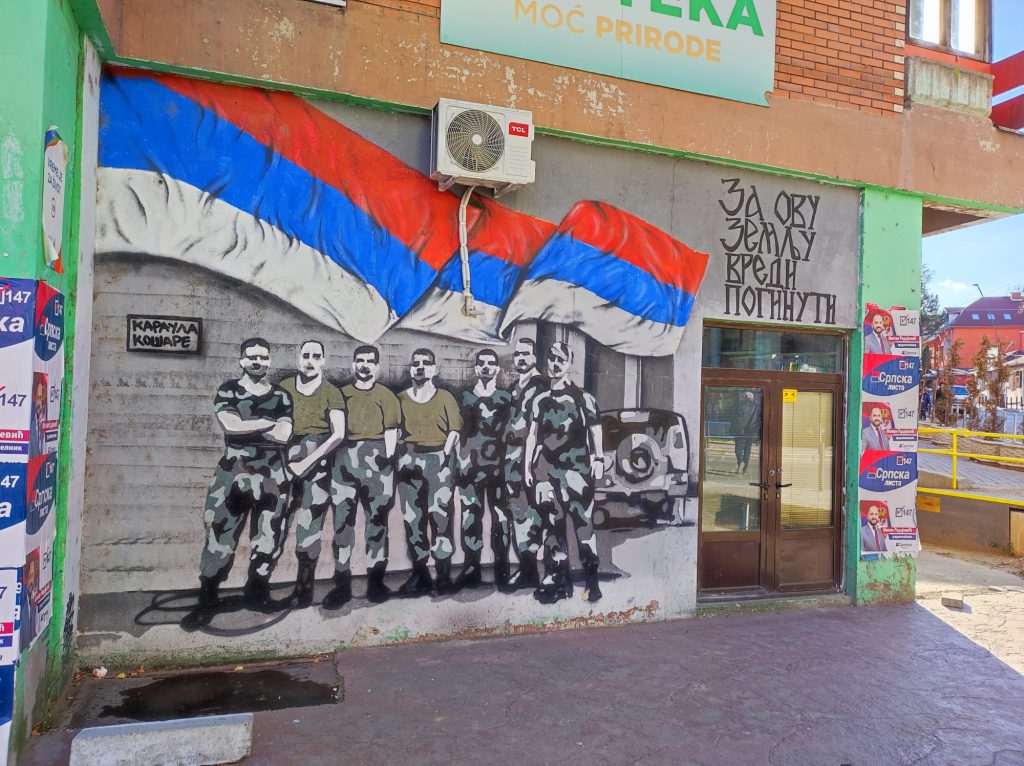
This is most pronounced in the city of Mitrovica, which is divided along the Ibar River. The city functions almost entirely on ethnic lines, with Serbs living north of the river and Albanians to the south. Each side flies their respective national symbols – some may say provocatively – in the face of the other side, as well as including them in murals.
The symbolism of Kosovo’s flag
The Kosovan flag has a rich and optimistic symbolism. While many challenges remain in the country, the use of pan-ethnic symbols and the focus on a pan-Kosovan identity may go some way to guarantee peace in the region.
- Golden Map: This symbolizes Kosovo itself, representing both the physical land and the collective identity of those who live on it.
- Six White Stars: Each star represents one of Kosovo’s main ethnic communities, including Albanians, Serbs, Turks, Gorani, Romani, and Bosniaks. This aims to embody the commitment to diversity and unity among these groups.
- Blue Field: Reminiscent of the EU flag, and reflective of Kosovo’s European aspirations. Like a clear blue sky, it also represents a new start and the hopes for a peaceful and prosperous future.
How can I see Kosovo’s flag for myself?
Reflecting the Balkans’ being a crossroads between East and West, Young Pioneer Tours has offered several unique opportunities to explore Kosovo over the years. This has brought us to every corner of the country.
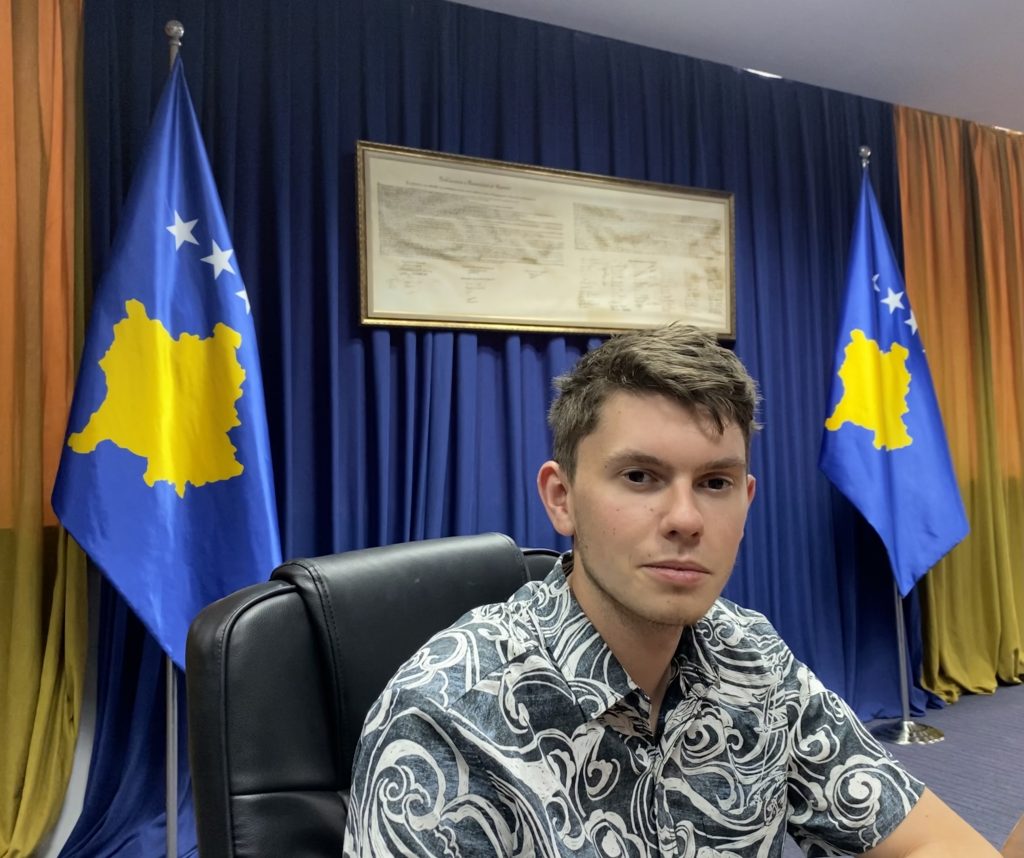
Currently, we run our Ultimate Yugoslavia Tour twice a year, in November and May. This includes two nights in Pristina at the end, and we can easily help you extend your time in the Kosovan capital and beyond!
However, should you want a more specialized itinerary, or just something a bit more “exclusive,” then we can help organize a private tour for you! Check out our Kosovo page or drop us an email – we’re a friendly bunch!





